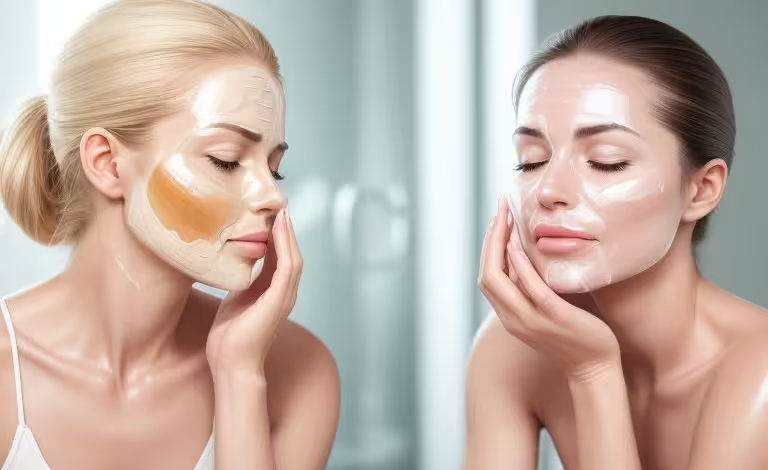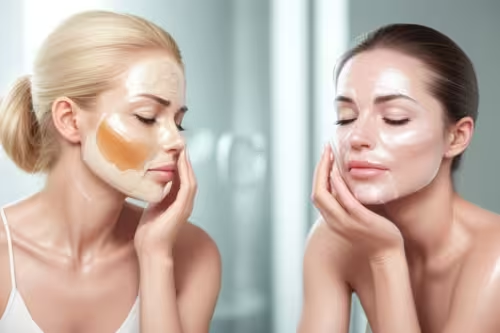7 Effective Ways to Reduce Visible Veins on the Face Naturally

7 Effective Ways to Reduce Visible Veins on the Face Naturally
Visible veins on the face, also known as facial veins or spider veins, can be a cosmetic concern for many. These tiny, thread-like veins can appear on the cheeks, nose, and around the eyes, causing self-consciousness. While they’re generally harmless, many seek ways to reduce or remove them for clearer, more even-toned skin. This article explores seven effective ways to reduce visible veins on the face naturally, helping you achieve a healthier complexion.

What Causes Visible Veins on the Face?
Before diving into remedies, it’s essential to understand what causes these veins. Common causes include:
- Genetics: If your parents had visible facial veins, you’re more likely to develop them.
- Sun Exposure: Prolonged sun exposure can weaken blood vessel walls, making veins more prominent.
- Aging: As skin loses elasticity and becomes thinner with age, veins may become more visible.
- Rosacea: This skin condition often causes redness and visible veins on the face.
- Alcohol Consumption: Excessive alcohol can dilate blood vessels, leading to broken veins.
- Hormonal Changes: Pregnancy, menopause, or taking birth control pills can cause hormonal fluctuations that lead to visible veins.
1. Protect Your Skin from the Sun
Sun damage is a significant contributor to visible veins on the face. The UV rays from the sun can weaken the blood vessels and cause them to become more prominent. To protect your skin:
- Use Sunscreen Daily: Apply a broad-spectrum sunscreen with at least SPF 30 every day, even when it’s cloudy.
- Wear Protective Clothing: Hats with wide brims and sunglasses can shield your face from direct sunlight.
- Seek Shade: Whenever possible, stay in the shade, especially during peak sun hours (10 AM to 4 PM).
2. Incorporate Vitamin C into Your Skincare Routine
Vitamin C is a powerful antioxidant that strengthens the skin and blood vessels, reducing the appearance of visible veins. It also boosts collagen production, which can thicken the skin and make veins less noticeable. Look for serums or creams with stabilized vitamin C and apply them regularly.
3. Stay Hydrated
Dehydration can make veins more noticeable by reducing skin elasticity. Drinking enough water throughout the day keeps your skin hydrated and healthy. Aim for at least 8 glasses of water daily, and consider incorporating hydrating foods like cucumber and watermelon into your diet.
4. Reduce Alcohol Consumption
Alcohol causes blood vessels to dilate, which can lead to the appearance of veins on the face. Limiting alcohol intake can help prevent the worsening of existing veins and reduce the likelihood of new ones forming.
5. Use Gentle Skincare Products
Harsh skincare products can irritate the skin, leading to inflammation and broken capillaries. Opt for gentle, fragrance-free products designed for sensitive skin. Avoid exfoliants with large, abrasive particles, and instead use chemical exfoliants with ingredients like lactic or glycolic acid that are less likely to cause irritation.
6. Massage with Aloe Vera
Aloe vera is known for its soothing properties and can be particularly beneficial for reducing the appearance of facial veins. Massaging aloe vera gel onto the affected areas can improve blood circulation and reduce inflammation, helping veins to appear less prominent.
- How to Use: Apply pure aloe vera gel to the face, gently massaging it in circular motions for a few minutes. Leave it on for 10-15 minutes before rinsing with lukewarm water. For best results, repeat this process twice daily.
7. Consider Natural Oils
Certain natural oils, such as rosehip oil and grapeseed oil, can help strengthen blood vessels and improve skin elasticity. These oils are rich in antioxidants and vitamins that nourish the skin and reduce the appearance of veins.
- Rosehip Oil: Packed with vitamin C and essential fatty acids, rosehip oil can help repair damaged skin and reduce the visibility of veins.
- Grapeseed Oil: Rich in vitamin E and linoleic acid, grapeseed oil is known for its skin-tightening and toning properties, making veins less noticeable.
Additional Tips for Managing Visible Veins on the Face
- Healthy Diet: A diet rich in antioxidants, vitamins, and minerals supports overall skin health. Include foods like berries, leafy greens, and nuts in your diet.
- Regular Exercise: Exercise improves blood circulation, which can help reduce the appearance of veins.
- Avoid Hot Water: Washing your face with hot water can dilate blood vessels, making veins more visible. Use lukewarm water instead.
When to See a Dermatologist
If home remedies don’t yield satisfactory results, or if the veins become more pronounced, it may be time to consult a dermatologist. Professional treatments such as laser therapy, sclerotherapy, or intense pulsed light (IPL) can effectively reduce or eliminate visible veins.
Visible veins on the face can be a cosmetic nuisance, but with the right care and natural remedies, you can significantly reduce their appearance. By protecting your skin from the sun, using gentle skincare products, and incorporating ingredients like vitamin C and aloe vera into your routine, you can achieve clearer, more radiant skin. If these methods don’t work, professional treatments are always an option to consider.
Remember, while these veins may be bothersome, they’re typically harmless. Focusing on overall skin health will not only help in managing visible veins but will also improve your complexion and boost your confidence.
